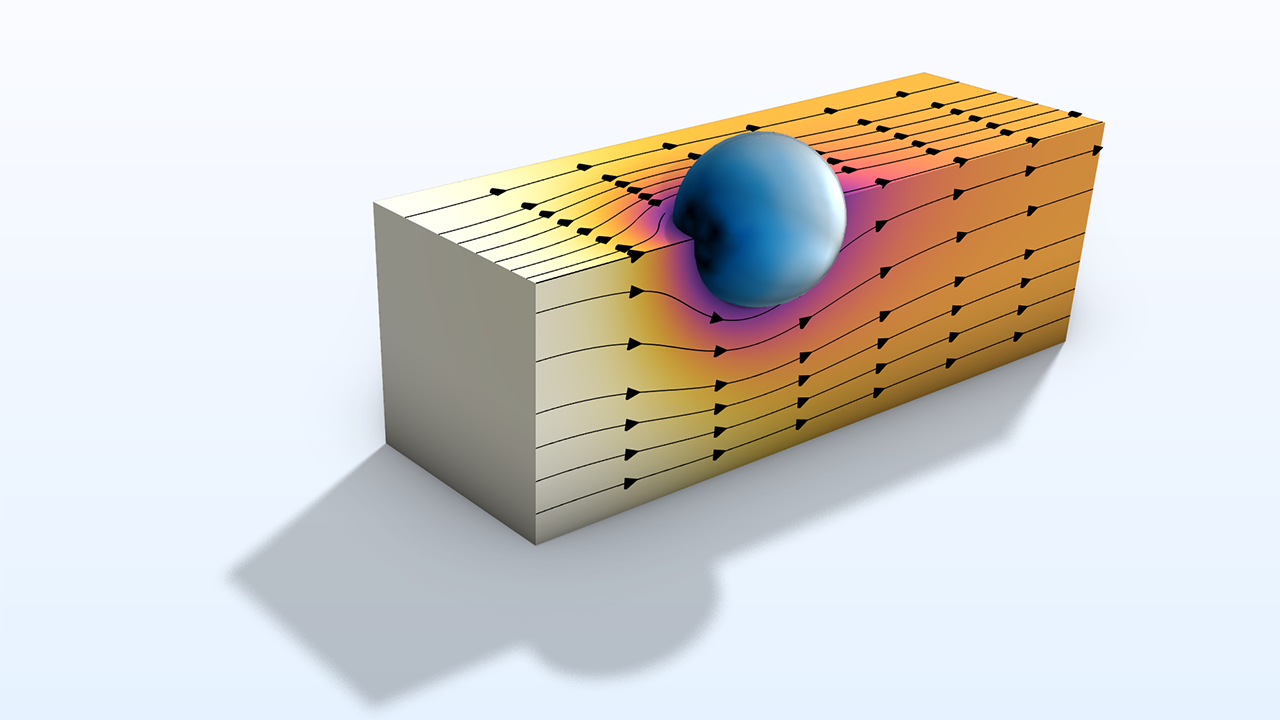Aggiornamenti Porous Media Flow Module
Trasporto dell'umidità nei mezzi porosi
La formulazione di non equilibrio per il trasporto di umidità nei mezzi porosi può ora essere utilizzata per risolvere sia l'umidità relativa che la saturazione di acqua liquida, estendendo l'applicabilità della modellazione oltre le ipotesi di equilibrio. Questa nuova funzionalità è disponibile nella funzione Hygroscopic Porous Medium.
Nel Model Wizard sono disponibili due nuove interfacce per il trasporto dell'umidità. La prima interfaccia, Nonequilibrium Moisture Transport in Porous Media, calcola l'umidità relativa e la saturazione dell'acqua liquida nei mezzi porosi senza assumere l'equilibrio vapore-liquido. La seconda interfaccia, Moisture Transport in Free and Porous Media, è parametrizzata per semplificare la configurazione di modelli che coinvolgono più mezzi coesistenti. La nuova funzione Porous Interface offre inoltre una modellazione flessibile tra vari mezzi, come l'evaporazione alle interfacce. Il nuovo tutorial Superheated Steam Drying mostra l'interfaccia Moisture Transport in Free and Porous Media e la funzione Porous Interface.
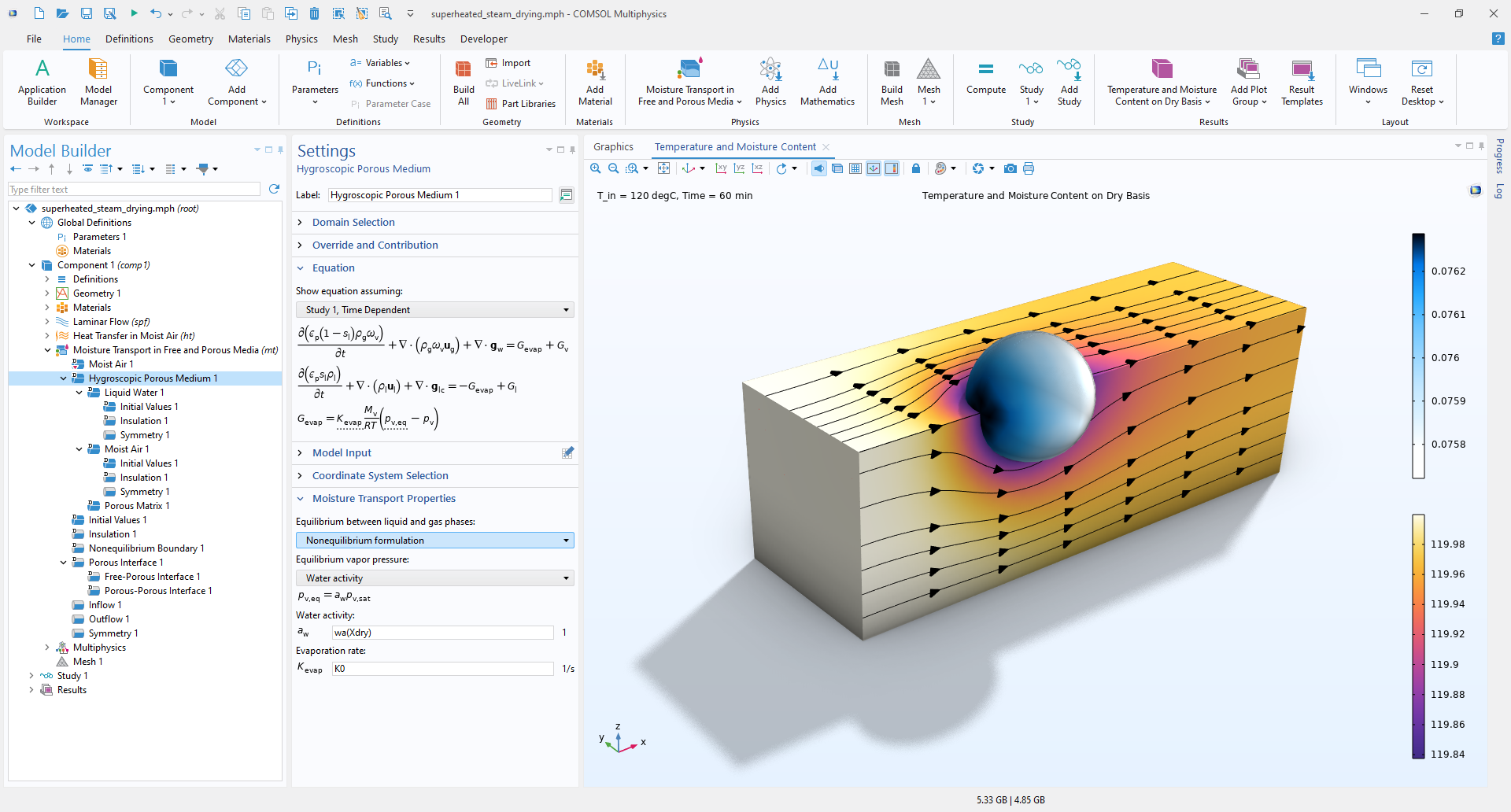
Nuove funzionalità nelle interfacce per il trasporto di fase
Alle interfacce Phase Transport è stata aggiunta una nuova condizione al contorno Boundary Mass Source. Questa nuova funzione tiene conto del consumo o della produzione di fasi diverse a causa di reazioni o altri processi fisici ai contorni. Le condizioni al contorno saranno ora più facili da impostare quando, ad esempio, il trasporto di fase è accoppiato a reazioni superficiali. Inoltre, per unificare la nomenclatura tra le diverse interfacce fisiche, i nuovi nodi Fluid e Porous Medium hanno sostituito i nodi Phase and Transport Properties e Phase and Porous Media Transport Properties precedentemente disponibili nelle interfacce Phase Transport.
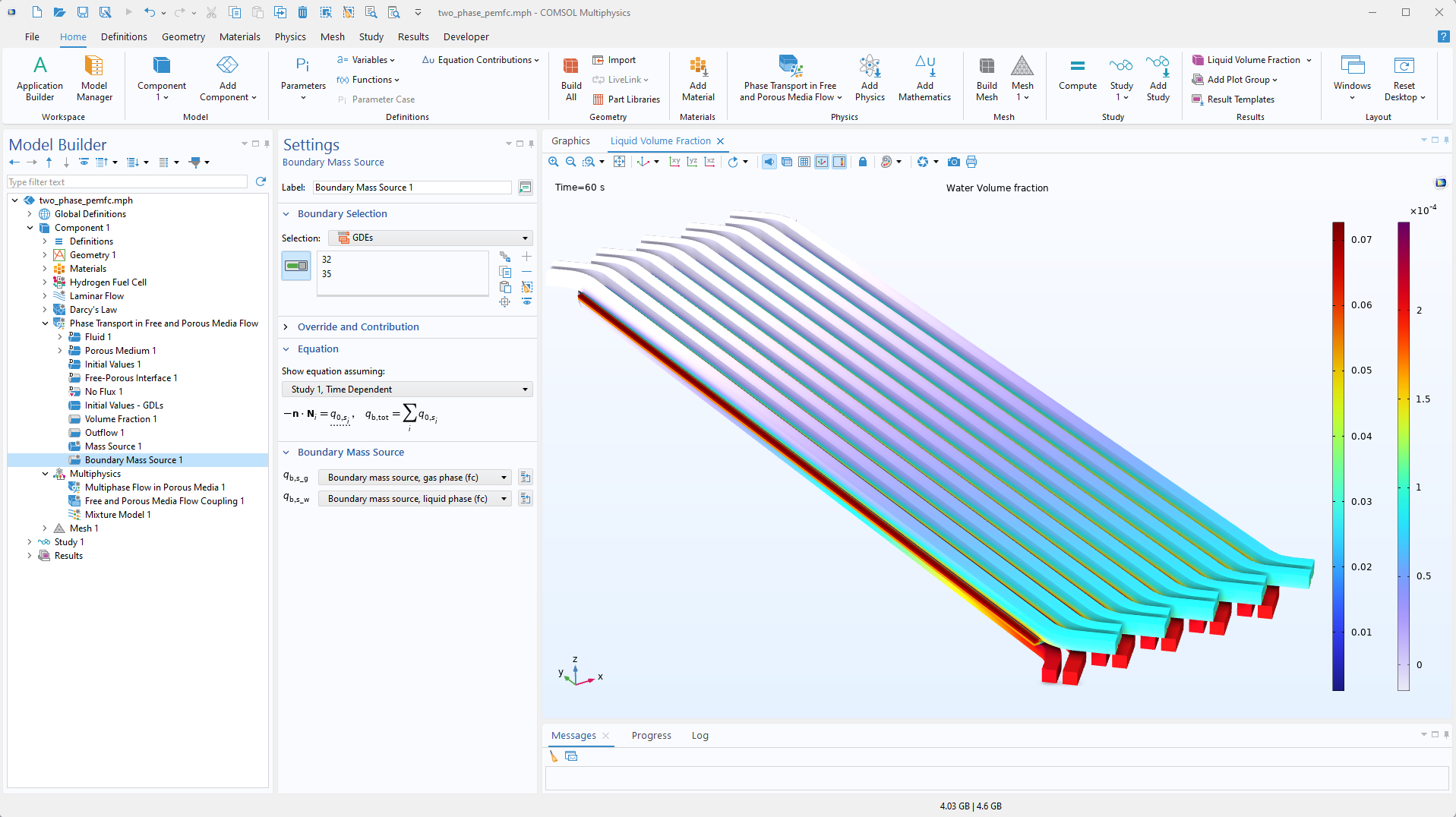
Opzione legge di potenza per le permeabilità relative
La funzione Porous Medium di Phase Transport in Porous Media include ora una nuova opzione Power law, che facilita l'implementazione di permeabilità relative basate su espressioni power law. Questo miglioramento semplifica l'impostazione e la modellazione del comportamento della permeabilità nelle simulazioni di mezzi porosi.
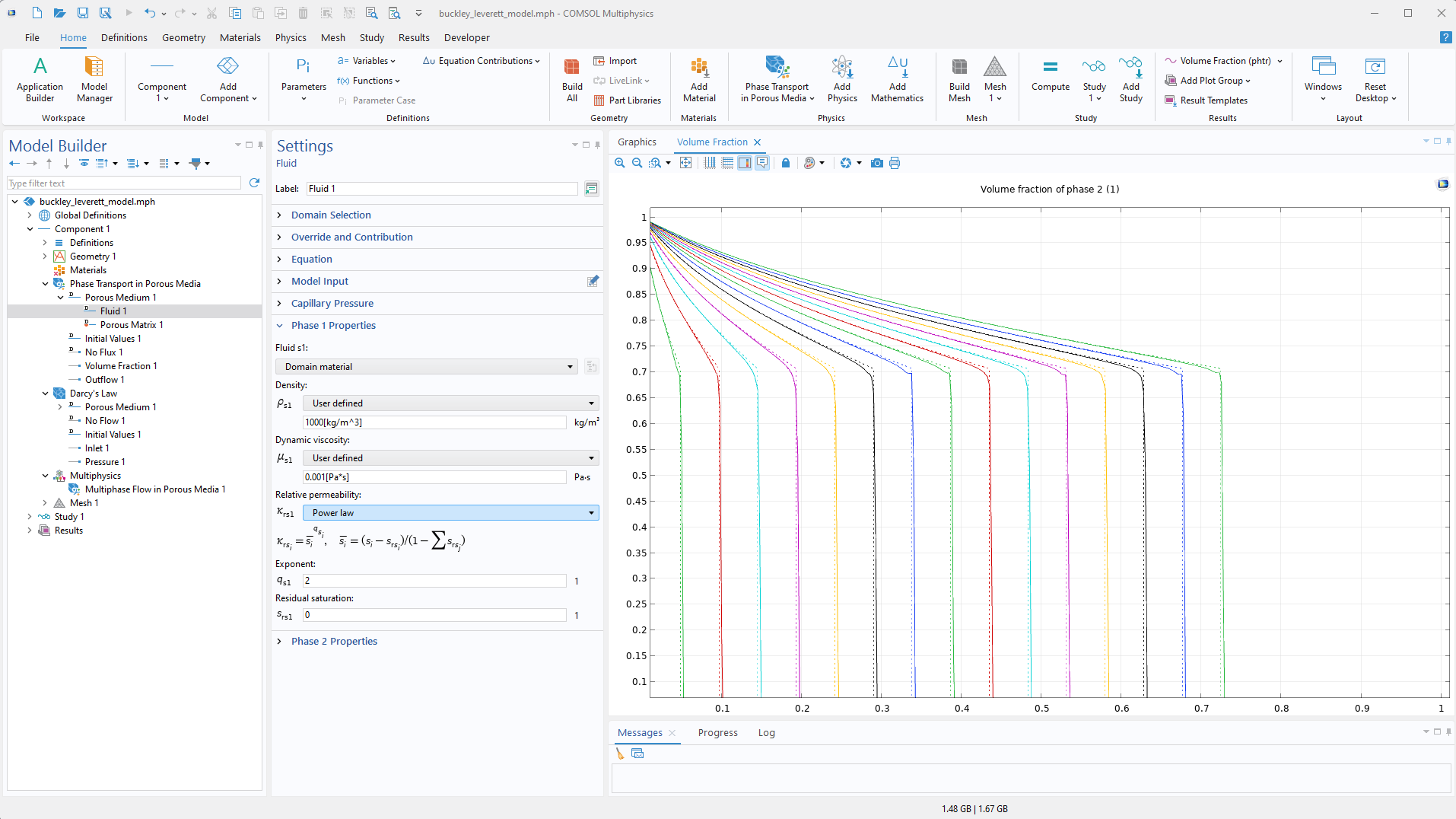
Modelli di risultato nelle interfacce di trasporto di specie chimiche
La creazione di grafici utili e visivamente accattivanti di sistemi in reazione può richiedere molto tempo, poiché spesso ci sono molti reagenti e quindi molti campi di concentrazione da graficare. Per risparmiare tempo, nelle interfacce di Chemical Species Transport sono disponibili diversi nuovi Result Templates. Tra questi, sono ora disponibili modelli di matrice di grafici che includono fino a quattro concentrazioni di specie contemporaneamente nella finestra Graphics. I Result Templates sono disponibili per tutte le interfacce Chemical Species Transport, indipendentemente dal prodotto aggiuntivo, ma sono particolarmente utili per le interfacce di trasporto multicomponente incluse nei moduli per l'ingegneria chimica e per CFD Module, Porous Media Flow Module, Subsurface Flow Module e Microfluidics Module.
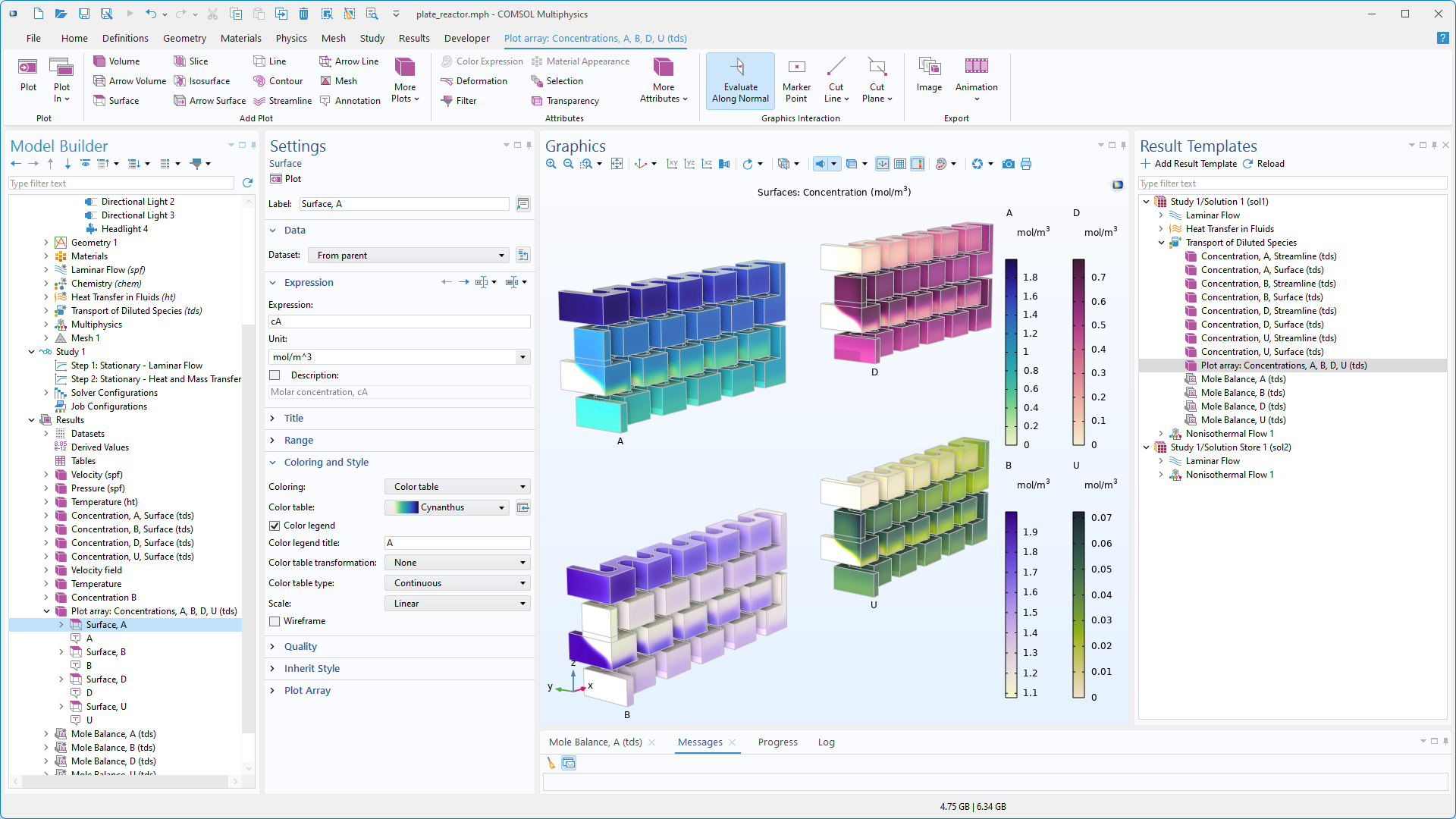
Nuovi tutorial
La versione 6.3 di COMSOL Multiphysics® introduce un nuovo tutorial e un'app nel Porous Media Flow Module.
Superheated Steam Drying of a Wood Particle
Homogenized Porous Material Properties App
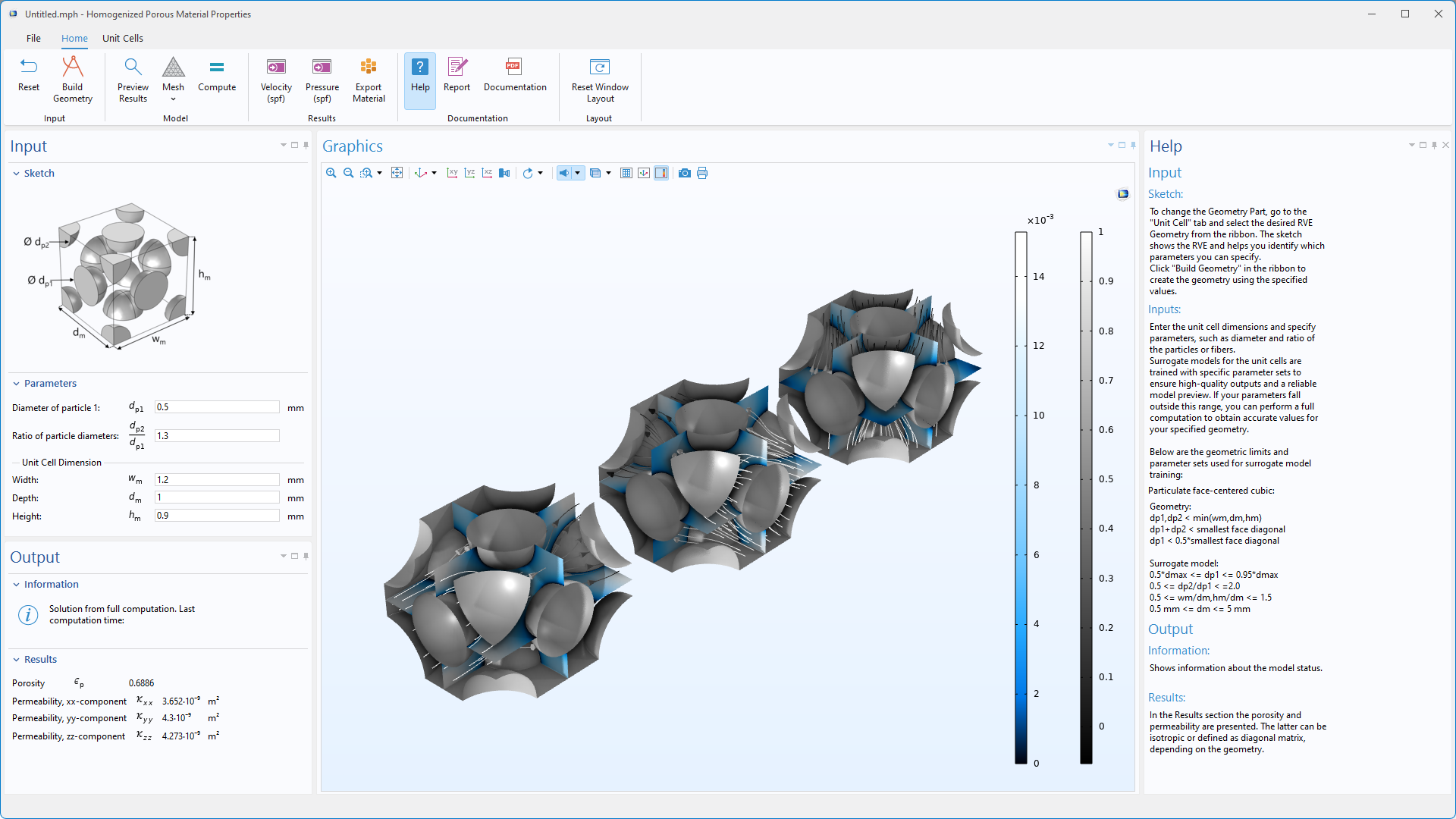
homogenized_porous_material_properties
Download da Application Gallery

